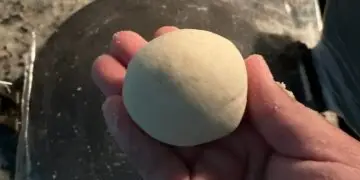November is one of my favorite months. We are solidly into autumn and the leaves are bursting through in gorgeous hues of oranges, reds, and yellow. It’s a snuggly time where daylight wains as soon as it begins, and the human instinct to burrow inside and await the cold has set in. While chatting with a good friend of mine about what I should write for this month’s Potting Shed article, she had the great idea of exploring acorns and how we can use them in this acorn-abundant time of year.
While most often associated with squirrels and chipmunks, acorns have served as part of the human diet for thousands of years on almost every continent. All species of acorn are edible for humans, however they do contain tannins that should be boiled or soaked out before using for consumption. Tannins are naturally occurring, water-soluble chemicals found in plants that can make food taste bitter when interacting with saliva and other liquids. With acorns especially, it is best to remove as many tannins as possible before consuming them for taste. This means that the primary way to turn acorns into delicious food is by making acorn flour.
Oak trees make up several species, and each acorn they produce has different levels of taste and tannins. In Virginia there are 27 native species of oak trees, and they can be loosely divided into white oaks and red/black oaks. White oaks germinate in the fall, while red/black oaks germinate in the spring. Most likely the beautiful nuts that you find on the ground right now are from white oak trees as a result. The best way to tell the two types apart is to look at their leaves; white oaks have rounded lobes while red/black oaks have spiky ones.
After you have gathered the desired amount of acorns, saving some of course for the animals that depend on them as well, let them dry. You may leave them to dry out naturally in a covered and temperature-controlled environment, or speed up the process by baking them at a low temperature for a few minutes. Drying the nuts makes them easier to sort and crack. You’ll want to go through each nut to make sure that there are no bugs or mold on them. Once you’ve separated them from their shells, it is time to leach out the aforementioned tannins. You may do this with either hot or cold water, but each method has its own quirks.
If you choose the cold water method, first ground up the acorns into a powder so they leach faster. Place the grounds in a container and cover them with water. Every six to twelve hours, change the water out and stir it up. After five to ten days the tannins should be dissolved and you must use the flour immediately or dry it once again to store for later use. The cold water method is best if you plan to bake with your acorn flour as it preserves the starches needed in baking.
The hot water method is much faster, but still takes a fair amount of time. In order to leach with this method, keep the acorns whole or coarsely chopped. Bring the nuts to a simmer and change out the water every thirty to sixty minutes for five to ten hours. While still labor intensive, one hour of simmering equals about one day of cold leaching. As mentioned earlier, acorns processed in this manner are not suitable for baking, but can instead be used in soups and stews, snacks, and even roasted and made into acorn coffee!
Once you’ve done the extensive legwork involved in making acorns palatable, they prove to be quite a versatile nut! A quick Google search pulls up dozens of tempting looking treats, however https://honest-food.net/foraging-recipes/acorn-recipes/ is an abundant reresource for foraging, preparing and cooking with acorns. From shortbread cookies to acorn stew, this website is full of interesting looking dishes. The website also mentions that if all of the prepwork required seems more exhausting than exhilarating, most of the recipes can be substituted with chestnuts instead with promising results.
In a fast-paced, Amazon Prime world, it is easy to look at the time it takes to process and prepare acorns for consumption and cringe. Most folks are not blessed with the spare time required for such an endeavor. However, if you find yourself with the time and resources and feel like reaching back into early human history, give acorns a try. Bon appetite!

Kelly Gilbert resides in Centreville with her Kiwi husband and fairy child Iva. When not daydreaming about a perfect garden, you can find her at Chantilly Library masquerading as a youth services librarian.


























